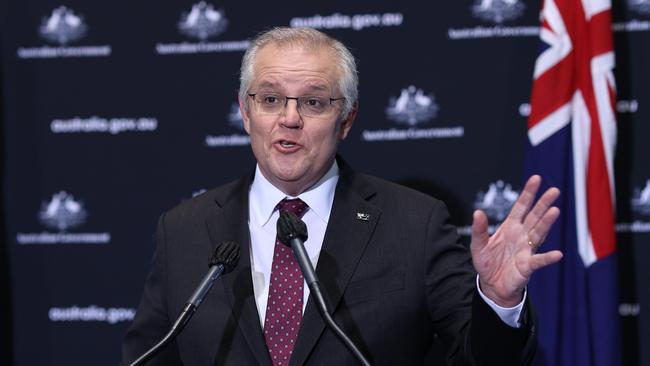New closing the gap agenda requires more than money

Details of the new plan, outlined on Thursday, represent a complete revision of the Rudd-era approach to closing the gap that set high ideals but did not deliver. Scott Morrison says his government’s plan is a joint effort with Indigenous leaders to back Indigenous communities. The national agreement on Closing the Gap builds on the draft targets endorsed by the Council of Australian Governments in 2018. It establishes 17 targets in areas such as education, employment, health and wellbeing, justice, safety, housing, land and waters, and languages. The biggest dollar item is a $378.6m scheme for Stolen Generations survivors who were removed as children from their families in commonwealth-controlled territories. It includes a one-off payment and the opportunity for each survivor to tell their story and receive an individual apology. An additional $254.4m will be spent on infrastructure to better support Aboriginal community-controlled health organisations.
As we reported on Wednesday, $160m will be made available to ensure the best start in life for Aboriginal and Torres Strait Islander children. A small part of this will be used to fund a program where Indigenous children as young as three will be taught literacy and numeracy skills using a back-to-basics approach that favours clear instruction over allowing student-led discovery. This is in keeping with the trend in NSW towards more traditional teaching methods and is a system that long has been championed by Indigenous leader Noel Pearson. It is well established that improving the lives and experiences of the next generation of Indigenous Australians is critical. As Paige Taylor wrote on Wednesday, the most recent data, from 2018, showed only 35.2 per cent of Indigenous children were “developmentally on track”. This means two-thirds of Indigenous children did not meet the threshold in one or more of the domains of physical health and wellbeing, social competence, emotional maturity, language and cognitive skills and communication skills, and general knowledge. The federal government has rightly identified that for a Closing the Gap agenda to work it must include involvement from all levels of government, Indigenous leaders and communities. The Prime Minister says when the Closing the Gap program was overhauled, four priority reforms were set to change fundamentally how governments and Aboriginal and Torres Strait Islander people worked together. Mr Morrison says the plan “is about real reconciliation, how we get there, and making sure all governments are held to account, state and federal”.
Having put its cards on the table, the government must make sure all participants play their part. The outcomes of the original Closing the Gap plan consistently have fallen short of expectations. Only two of the seven Closing the Gap targets set in 2008 – early childhood education and year 12 attainment – were achieved after 10 years. Australia failed in targets for school attendance, child mortality, employment, life expectancy, and literacy and numeracy.
Under the updated scheme agreed by all states and territories, the federal government and the Coalition of Peaks, a group of 50 Indigenous organisations, there are 17 new targets. The new approach of greater co-operation and accountability is still a work in progress. A Productivity Commission report released last month said it was not yet possible to assess progress under the new agreement as the relevant reporting periods were all before or around its July 2020 start. In seven target areas with the most recent data available, progress was mixed. Three areas were on track: healthy birth-weight babies, the enrolment of children in the year before full-time schooling, and youth detention rates. The remaining four were not on track: life expectancy, adult imprisonment, out-of-home care for children, and suicides. As part of the new approach, the Productivity Commission will keep a running dashboard of progress on all of the targets.
If there is a heartening trend it is that most progress appears to be being made in the areas involving children. The challenge is to ensure that the better childhood outcomes follow these individuals as they make their way through life. Past experience has shown that money alone is not enough. What is required is honesty, good faith and genuine co-operation.


A back-to-basics push for early childhood education is a welcome sign that a similarly practical approach can be taken to lifting the lives and aspirations of all Indigenous Australians. The education trial is only a small part of a $1bn plan the federal government hopes will finally deliver on the long-promised agenda to close the gap.